Visiting Las Terrazas, Cuba – and Recipe for Ropa Vieja
About an hour’s drive outside of Havana, in Pinar del Rio province, at the site of a former coffee plantation, lies Las Terrazas (the terraces), named so because the hillside land was terraced to maximize coffee plant production.
The site was designated a biosphere reserve by UNESCO in 1984 (Old Havana is also named a World Heritage Site by UNESCO). Today, there is a rural self-sustaining community of about 1,000 people living at the site, and operating an eco-tourism resort. We arrived at a thatched roof hut with a small stage, where, as with almost everywhere we visited, the welcome cocktail (usually a Mojito, although Cuba Libres were available, too) awaited us, and a wonderful band was playing. Some members of the tour group there before us were dancing to the irresistible and complex beat.
We toured the site where the former hillside coffee terraces were – also, the remnants of the slave quarters, and the milling area for both coffee and corn. Then it was on to sample the delicious coffee drinks served at the community’s little coffee shop – Che lattés and a blended cold coffee with cocoa named Las Terrazas. I wish I had been able to have another of that particular specialty drink of theirs. Let’s just say Starbucks could learn a thing or two from them.
A group of the community’s schoolchildren came out to greet us, even though it was Sunday, and the community’s doctor also met us in his office to speak with us.
Tourism is very important business in Cuba – just about the only industry left to the island after the collapse of the Soviet Union, when they lost all of their outside investment. And the ridiculous embargo placed on them by the U.S., hampers much investment and business partnership on the part of other nations. Although, only the U.S., Israel and one other obscure nation that no one has heard of (update- as of this week, even that island nation abstained, and the U.S. and Israel stand alone in their vote) continues to vote to maintain the embargo at the United Nations, because of it, Cuba is unable to receive loans from the either the World Bank or the IMF. The world’s most powerful nation is a formidable enemy. And even though Cuba’s large port of Havana is the gateway to the Caribbean, because of the embargo, any ship stopping there is unable to dock at any other port for 6 months afterwards. Fifty years of an embargo – a country that cannot do the U.S. any harm, a country that’s barely on the mental radar of most Americans.
Las Terrazas was the site of the best food we had in Cuba, a traditional menu of Ropa Vieja, roasted chicken with the traditional garlic sauce and topped with sliced onions, black beans and rice, of course, all cooked for us in the stone house kitchen, in the old style, over a cast iron, wood burning stove.
The Ropa Vieja was the best I’ve ever had, with an almost creamy texture to it (I’m guessing it might be due to the differences in the way the cattle are raised), and the chicken legs and thighs were plump, dark and flavorful – qualities I attribute to the fact that the chickens spent their lives running free on the grounds here, scratching around for worms and whatever else they found to eat before becoming our lunch.
Ropa Vieja
I oven braised this Ropa Vieja in a wonderful cast iron roasting pan with a lid that I found at Tuesday Morning a couple of years back, in an attempt to simulate the cooking over charcoal on the cast iron stove. It wasn’t like the Ropa Vieja at Las Terrazas, but still very tasty.
- 2 -2 1/2 pounds of very well marbled chuck stewing meat*, cut into 2-3 inch pieces
- 2-3 tablespoons olive oil
- 2-4 tablespoons sherry
- 1- 1/2 cups water or mixture of water and beef stock, if preferred
- Sofrito
- 1 large bay leaf
- Coarse salt and black pepper
* Skirt steak is traditionally used for Ropa Vieja, but it has become harder to find, although some use flap meat (easier to find now) interchangeably.
- Heat the oil in a heavy pan. Lightly salt and pepper and pepper the meat, then brown it very well on all sides in the pan.
- Add the sofrito to the meat. Deglaze the pan the sofrito was cooked in with the sherry, and add that to the meat mixture. Add enough water, or water/stock mixture to barely cover the meat, about 3/4’s of the way. Add the bay leaf.
- Cover the meat with a piece of parchment cut to fit the pan. Cover the parchment covered meat tightly with foil, pressing it in a bit in the middle to create a concave covering. Cover the foil covered pot with a heavy lid, and place in a 325 degree oven to roast for about 2-3 hours.
- Allow the meat to cool, then shred it (Roja Vieja means “old clothes” in Spanish). The dish is best served the day after cooked, when the flavors have had a chance to marry. If desired, add more salt, pepper and even cumin and /or oregano, if you are going to let it sit over night.
For the Sofrito:
- 4 medium to large very ripe tomatoes
- 1 large onion (@ 1 1/2 cups), diced
- 1 small green bell pepper (@3/4 cup), diced
- 1/2 small red bell pepper, diced
- 3-4 garlic cloves, minced
- 1 tablespoon double strength tomato paste
- 3-4 tablespoons olive oil
- 3/4 teaspoon freshly toasted and ground cumin seeds
- 1/2 teaspoon dried oregano
- Coarse salt to taste
- Roast the tomatoes on a sheet of foil on a baking sheet until the skin is blistered and beginning to blacken in spots.
- Heat the oil in a large pan over medium heat. Add the onions, bell pepper and garlic. Cook over for 4-5 minutes until soft, but not browned.
- Stir in the tomato paste until incorporated.
- Pass the tomatoes through a food mill over the pan, adding the tomato puree to the onion/tomato paste mixture.
- Add the cumin and oregano and simmer over low heat for about 45 minute to an hour, stirring occasionally, until the mixture becomes thick and slightly orangey. Scrape down the tomato mixture that accumulates on the sides on the pan, as needed, adding it to the mixture in the pan. Stir a very healthy pinch of coarse salt into the sofrit0, to taste.
Faces of Las Terrazas



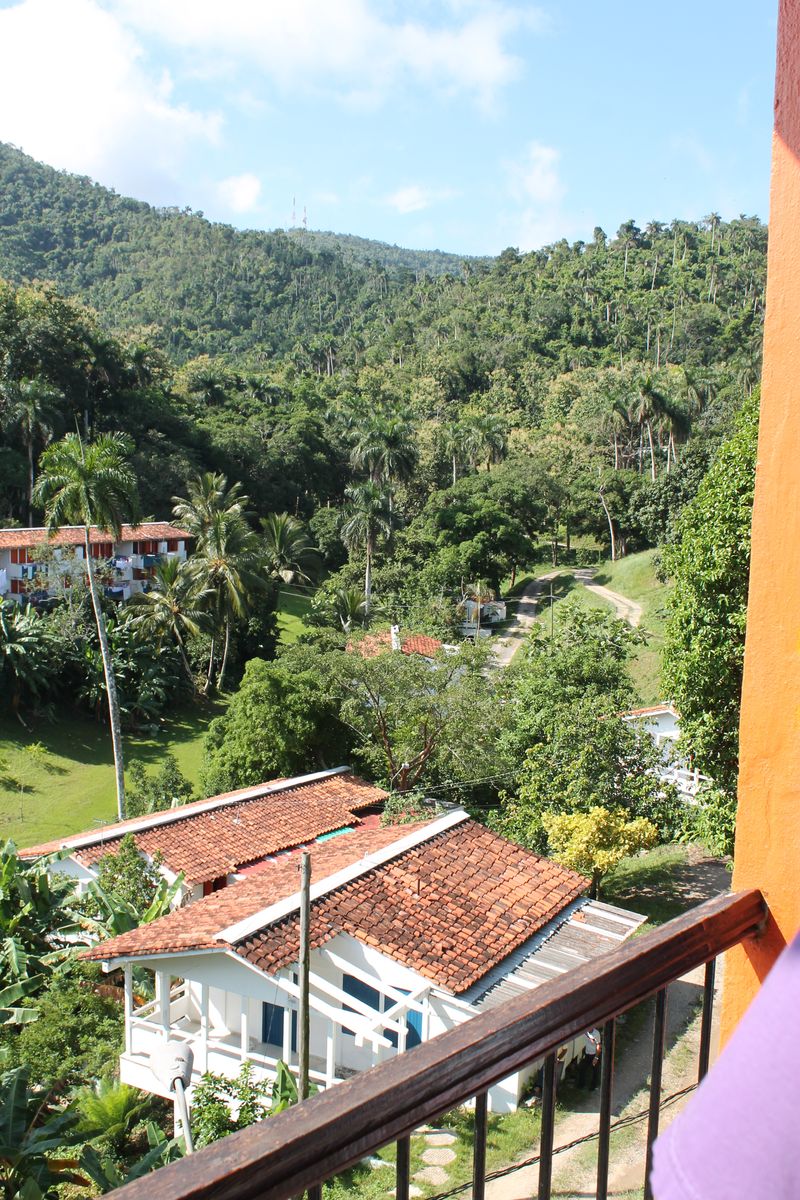
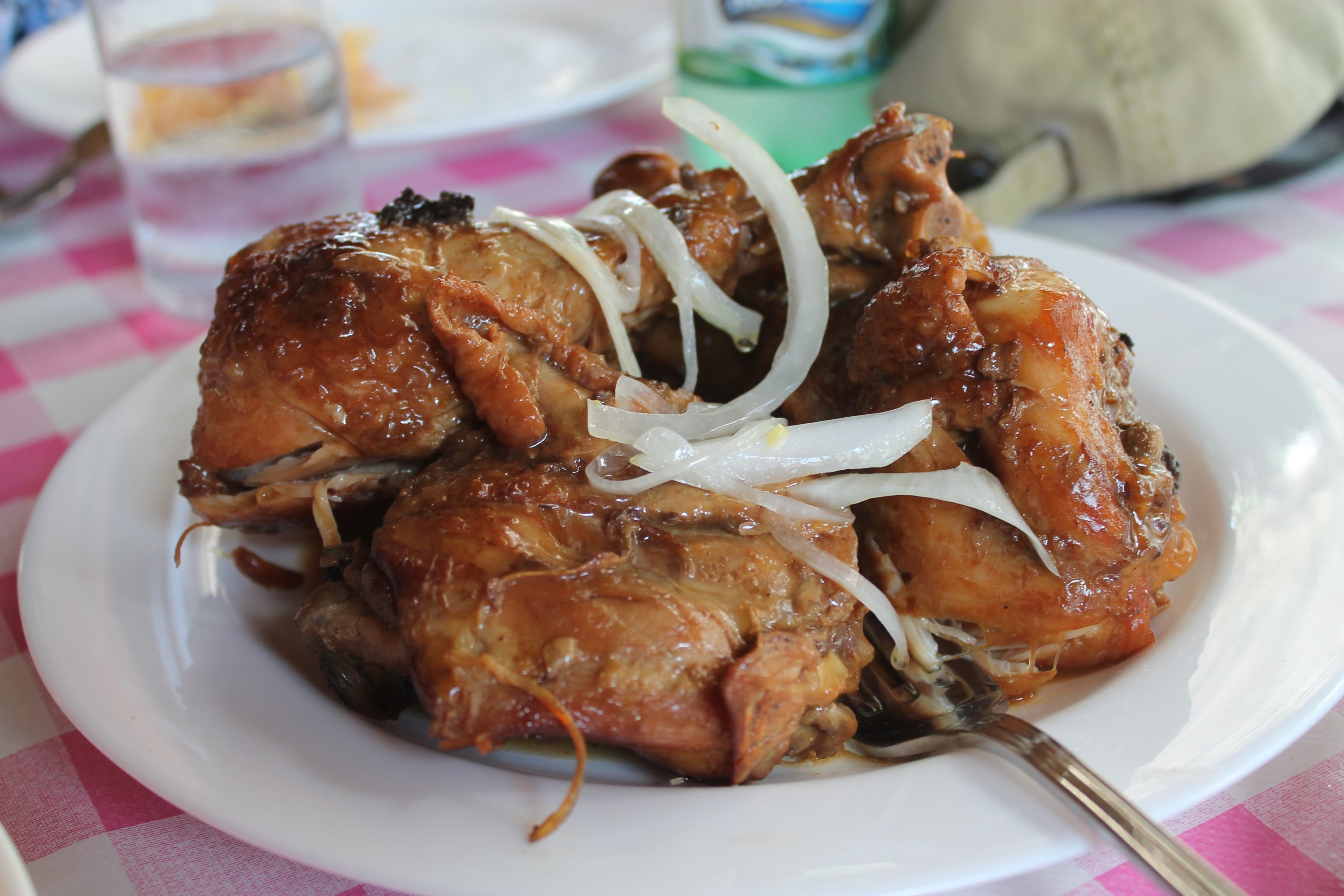
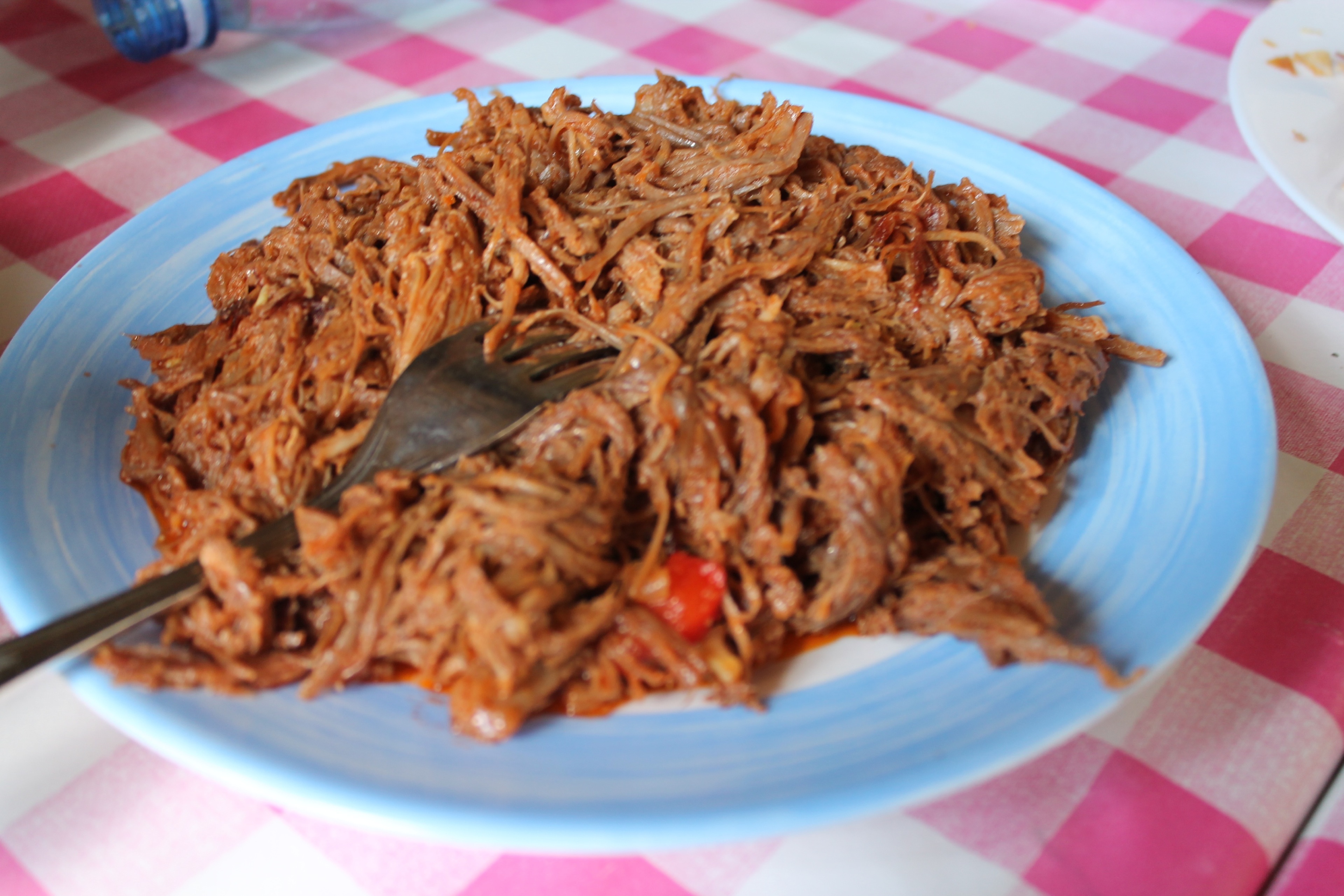
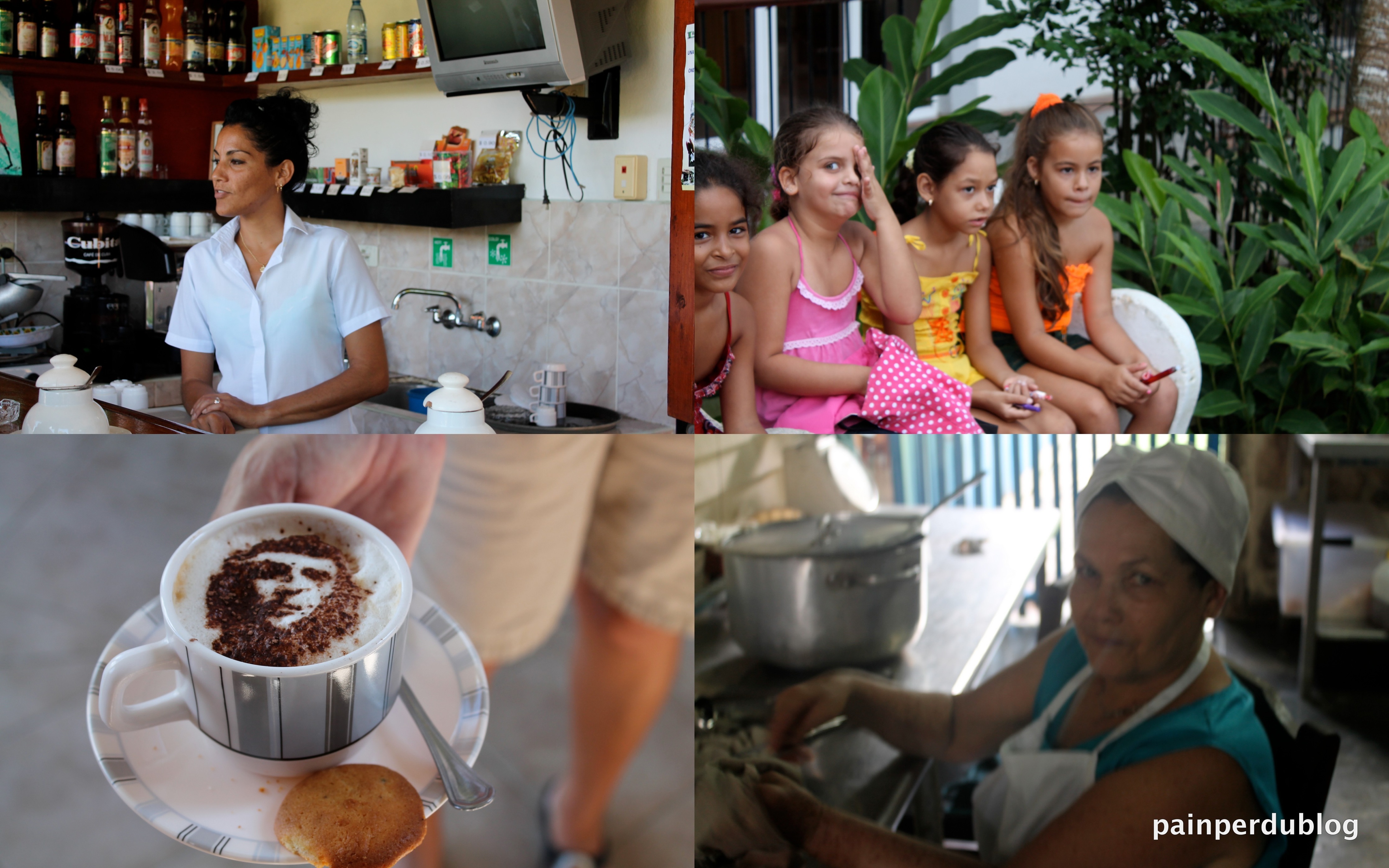
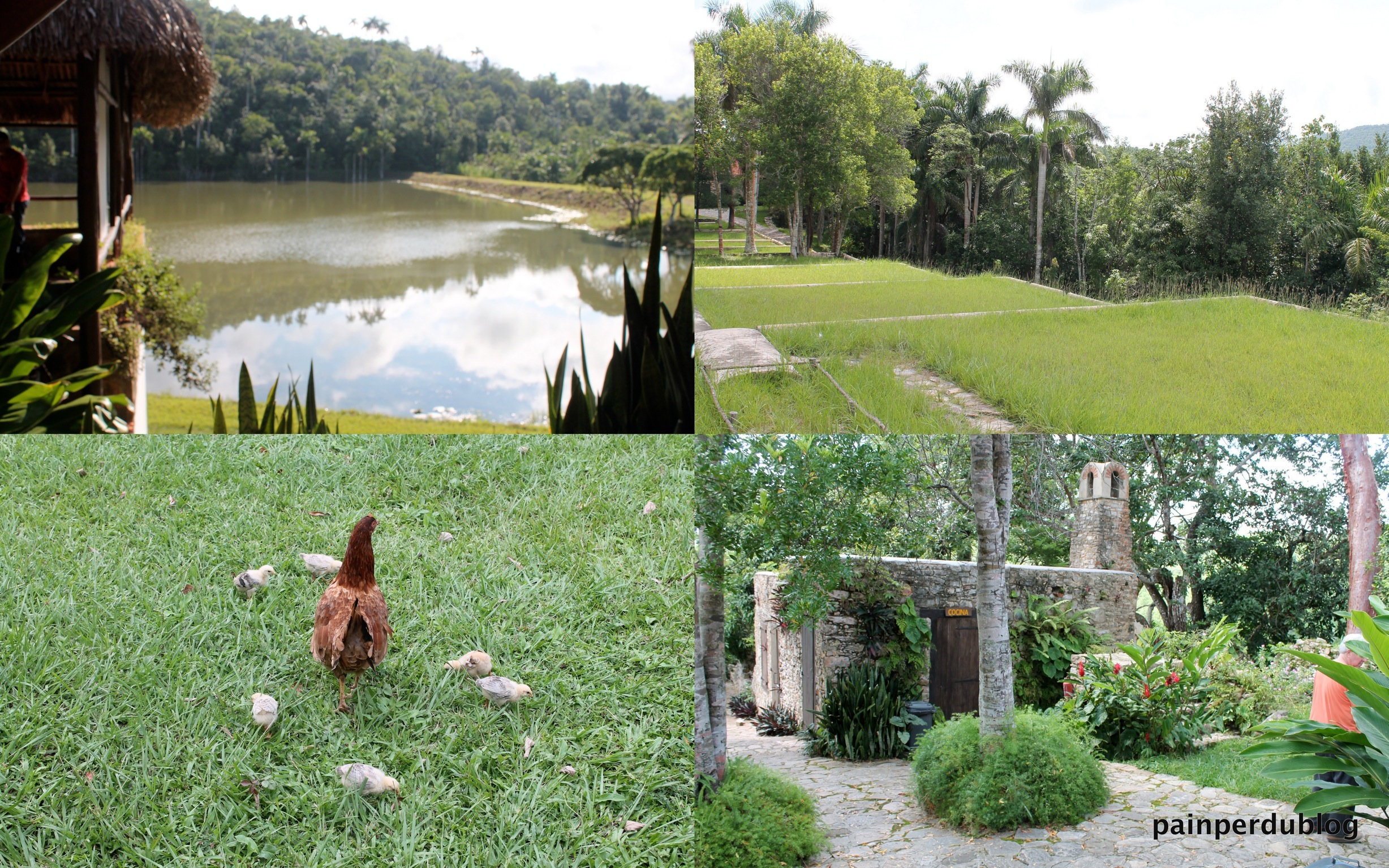




1 Comment
Ahh. The secret’s in the sofrito. GREG
November 5, 2013